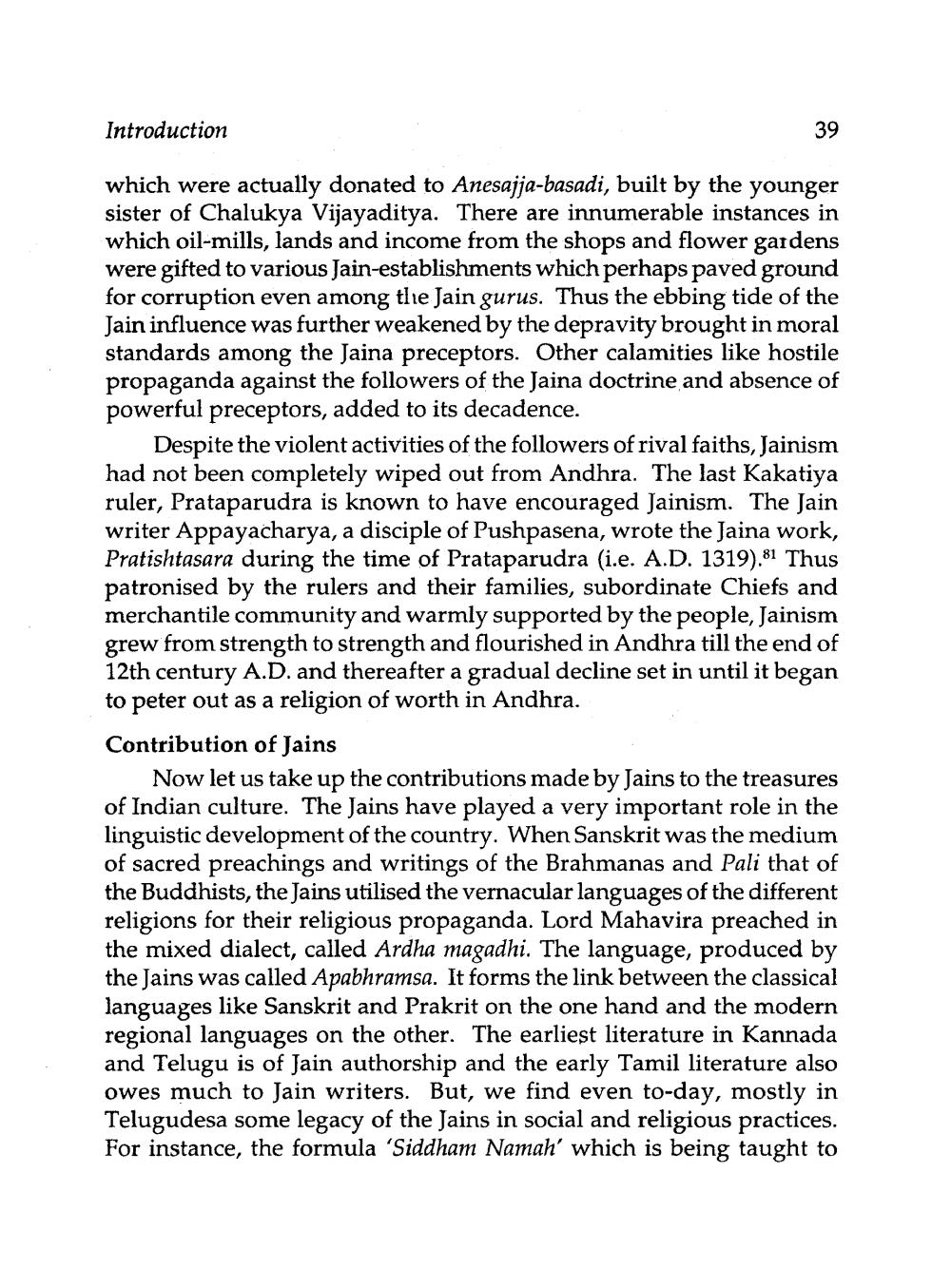________________
Introduction
39
which were actually donated to Anesajja-basadi, built by the younger sister of Chalukya Vijayaditya. There are innumerable instances in which oil-mills, lands and income from the shops and flower gardens were gifted to various Jain-establishments which perhaps paved ground for corruption even among the Jain gurus. Thus the ebbing tide of the Jain influence was further weakened by the depravity brought in moral standards among the Jaina preceptors. Other calamities like hostile propaganda against the followers of the Jaina doctrine and absence of powerful preceptors, added to its decadence.
Despite the violent activities of the followers of rival faiths, Jainism had not been completely wiped out from Andhra. The last Kakatiya ruler, Prataparudra is known to have encouraged Jainism. The Jain writer Appayacharya, a disciple of Pushpasena, wrote the Jaina work, Pratishtasara during the time of Prataparudra (i.e. A.D. 1319).81 Thus patronised by the rulers and their families, subordinate Chiefs and merchantile community and warmly supported by the people, Jainism grew from strength to strength and flourished in Andhra till the end of 12th century A.D. and thereafter a gradual decline set in until it began to peter out as a religion of worth in Andhra. Contribution of Jains
Now let us take up the contributions made by Jains to the treasures of Indian culture. The Jains have played a very important role in the linguistic development of the country. When Sanskrit was the medium of sacred preachings and writings of the Brahmanas and Pali that of the Buddhists, the Jains utilised the vernacular languages of the different religions for their religious propaganda. Lord Mahavira preached in the mixed dialect, called Ardha magadhi. The language, produced by the Jains was called Apabhramsa. It forms the link between the classical languages like Sanskrit and Prakrit on the one hand and the modern regional languages on the other. The earliest literature in Kannada and Telugu is of Jain authorship and the early Tamil literature also owes much to Jain writers. But, we find even to-day, mostly in Telugudesa some legacy of the Jains in social and religious practices. For instance, the formula 'Siddham Namah' which is being taught to




